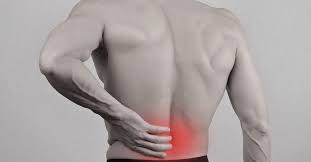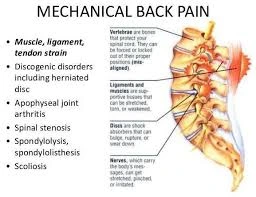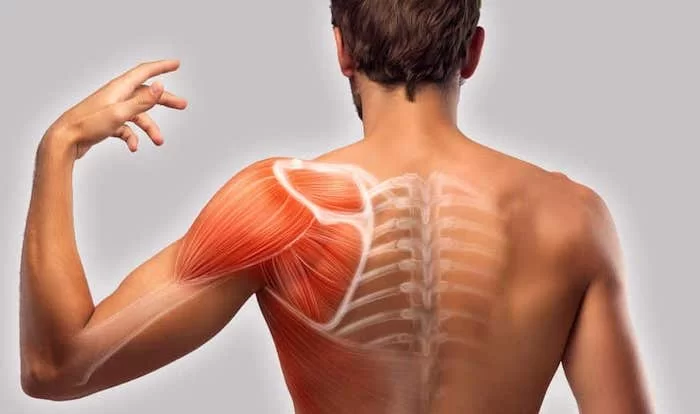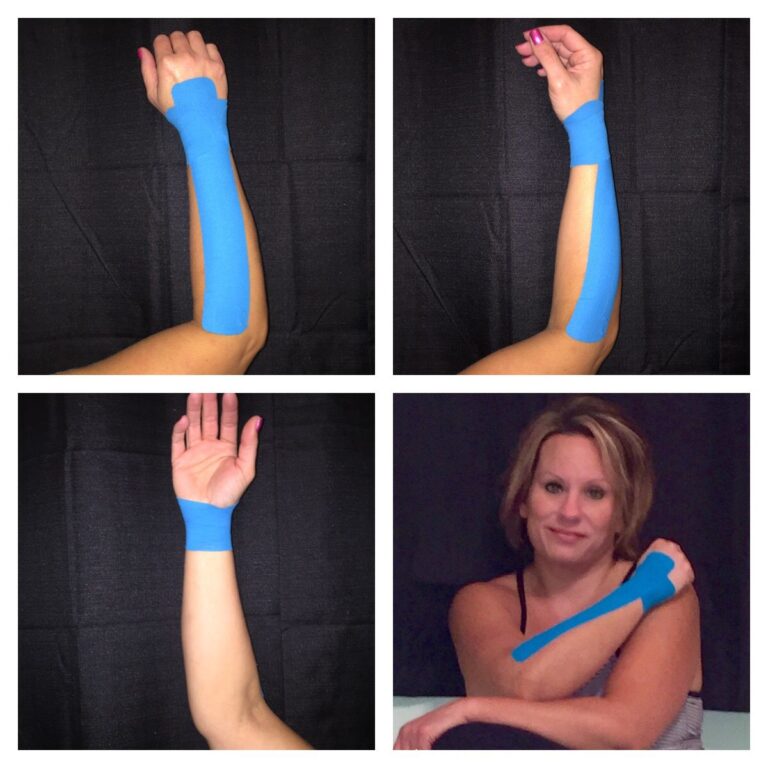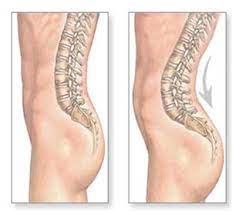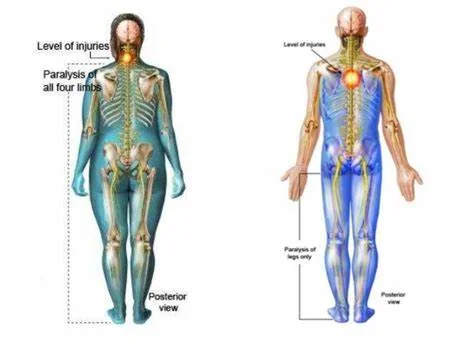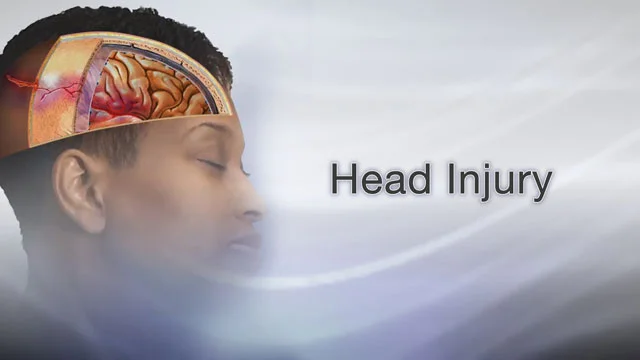Back muscle strain
Table of Contents
What is back muscle strain?
Back muscle strain is caused when muscle fibers are over-stretched or tear.
- Most common causes of back muscle strain start to lessen within a few hours or days and don’t lead to long-term problems.
- However, if it’s severe enough to disrupt day-to-day activities, seeking medical attention is warranted, If the pain has continued for further than a week or two weeks.
- A line of muscles and ligaments in your back hold the bones of your spinal cord in position. You can strain these muscles by stretching them too outlying, causing small tears in the tissue. The muscles are also exhausted, so they may not be able to hold the bones of your spinal column in place correctly.
- The backbone becomes less stable, causing low back pain. And because nerves stretch out from the spinal cord throughout the entire body, low back strain can cause aches in regions other than your back.
- It can also be caused by improper posture, emotional stress, being out of shape, being fat, or sitting in the same position for long ages. Even a severe cough can generate low back strain.
- Muscles in the back can stretch or tear. These common injuries are generally affected by picking up a heavy object(or picking it up the wrong way), exercise, overuse, or an accident.
- Back strains can lead to muscle spasms or muscle cramps. In severe damage, the back muscles can be paralyzed.
Where is a back muscle located?
- Your back muscles are the main structural support for your spine (trunk). These muscles support moving your body, including your neck, head, shoulders, arms, and legs. Your back muscles work together to allow you to twist, bend over, extend your back and turn your head.
- These muscles also support you to stand up straight and sit. They play a crucial role in supporting your spine and helping you breathe. Their jobs include
- The anatomy of your back muscles can be multipart. There are several different coats of muscles in your back that are often pulling in different and various directions.
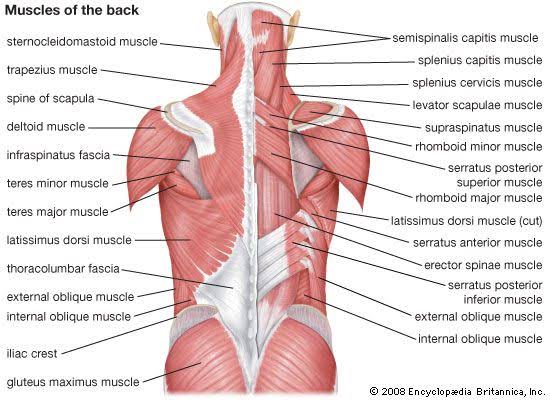
The superficial layer: The surface layer of back muscles lies just below your skin and fascia.
- Trapezius
The trapezius is divided into three distinct regions the upper, median, and lesser trapezius.
- Origin
- Superior fibers: medium one-third of the superior nuchal line, external occipital protuberance
- Middle fibers: nuchal ligament stuck to the spinous processes of C1- C6 vertebral columns, spinous processes, and supraspinous ligaments of vertebral columns C7- T3
- Inferior fibers: spinous processes and supraspinous ligaments of vertebral columns T4- T12
- Insertion
- Superior fibers: posterior border of the side one-third of the clavicle
- Middle fibers: medium acromion process fringe, the superior crest of the chine of the scapula
- Inferior fibers: side apex of the middle-end of the scapular spine-
- Nerve
- The accessory nerve(motor)Cervical spinal nerves C3 and C4(sensory and motor)
- Actions
- Scapular retraction, rotation, elevation, and depression
- Antagonist
- Pectoralis major, Latissimus dorsi, and Serratus anterior muscle
2. Rhomboid Major and Minor
- Origin
- nuchal ligaments, spinous processes of the vertebrae C7 to T5
- Insertion
- medial border of the scapula
- Artery
- dorsal scapular artery
- Nerve
- dorsal scapular nerve
- Actions
- Pulls scapulae medially rotate scapulae, Holds scapulae into thorax wall
3. Latissimus Dorsi
- Origin
- Spinous processes of vertebral columns T7- L5, thoracolumbar fascia, iliac crest, lower 3 or 4 ribs, and lower angle of the scapula
- Insertion
- the intertubercular groove of the humerus between the pectoralis major and teres major muscle
- Artery
- Thoracodorsal branch of the subscapular artery
- Nerve
- Thoracodorsal nerve(C6, C7, C8)
- Actions
- extend, adduct, and internally rotates the arm when the insertion is moved towards the origin. When observing the muscle action of the origin towards the insertion, the latissimus dorsi is a very powerful rotator of the trunk.
- Antagonist
- Deltoid and trapezius muscle
The Intermediate Layer
1.Serratus posterior superior.
- Origin
- Nuchal ligament(or ligament nuchae) and the spinous processes of the vertebral columns C7 through T3
- Insertion
- The upper borders of the 2nd to 5th ribs
- Artery
- Intercostal arterials
- Nerve
- 2nd through 5th intercostal nerves
- Actions
- Elevates ribs 2- 5
2.Serratus posterior inferior
- Origin
- vertebral columns Spinous processes of T11- L2
- Insertion
- The inferior borders of the 9th to 12th ribs
- Artery
- Intercostal arteries
- Nerve
- Intercostal nerves T9 through T12
- action
- Depress the lesser ribs 9- 12, aiding in expiration
The Deep Layer: The deep layer of back muscles is also known as the intrinsic layer and resides closest to your vertebral column.
- Erector Spinae
- Origin
- Spinous processes of T9- T12 thoracic vertebral columns, the medium slope of the dorsal segment of the iliac crest
- Insertion
- spinous processes of T1 and T2 thoracic vertebral columns and the cervical vertebrae
- Artery
- lateral sacral artery
- Nerve
- posterior branch of spinal nerve
- Actions
- extends the vertebral column
- Antagonist
- rectus abdominis muscle
2. Multifidus
- Origin
- Sacrum, Erector spinae Aponeurosis, PSIS, and Iliac crest
- Insertion
- spinous process
- Nerve
- Posterior branches
- Actions
- Provides proprioceptive feedback and input due to high muscle spindle density; unilateral ipsilateral side-bending, Bilateral backward extension, and contralateral rotation.
3. Quadratus Lumborum
- Origin
- The posterior border of the iliac crest
- Insertion
- The inferior border of rib 12 and vertebrae L1- L5
- Artery
- Lumbar arterials, a lumbar branch of the iliolumbar artery
- Nerve
- The twelfth thoracic and first through fourth frontal rami of lumbar nerves(T12, L1- L4)
- Actions
- Alone(unilateral), side flexion of vertebral column; Together(bilateral), depression of thoracic rib cage
What is the cause of back muscle strain?
- Wring or pulling a muscle or tendon can result in a strain. It can also be caused by a single example of improper lifting or by overstretching the back muscles. A chronic(long-term) strain generally results from overuse after the prolonged, repetitious motion of the muscles and tendons.
- An acute back muscle strain is one time your muscle tears snappily and suddenly. muscle tears will go either from injuries or trauma. this will respond to
- not warming up properly before physical exercise
- poor flexibility
- poor exercise
- overexertion and fatigue weakness
- In addition, several factors can put a person at greater risk for a back strain, including
- Curving the lower back overly
- Being overweight
- Having weak back muscles or abdominal muscles, and tight hamstrings( the back muscle of the thighs).
- Playing sports that affect pushing and pulling — such as weightlifting and football — also increases the threat of a low back injury.
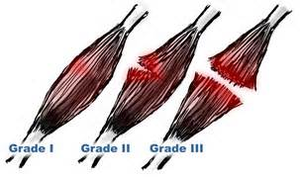
Back muscle strain is classified into three grades
Back muscle strains can be graded into the following types based on the intensity
- Grade I mild injury causing the muscle fibers to stretch beyond their normal limit
- Grade II moderate injury where several muscle fibers may tear
- Grade III severe injury where the entire muscle ruptures
- The vast majority of muscle strains are generally graded I, which will generally heal indeed without treatment.
Sing and Symptoms of back muscle strain
A back muscle strain generally causes some combination of the following symptoms
- Localized or diffused lower back pain
- Tightness and stiffness in the affected muscle
- Lump in the affected area
- Redness of the skin over the back,
- Difficulty in performing bending or wringing motions
- Snapping or popping sensation in your back
- Swelling and bruising in your back muscle.
- Back muscle spasms
- Muscle weakness
- Back Muscle stiffness
How to diagnose back muscle strain?
Mild strains can usually be diagnosed based on the medical history
including a review of the symptoms and how the injury occurred—and a physical examination by a doctor.
In cases of more severe strains, especially when there is weakness or loss of function, an X-ray may be taken to rule out a fractured or herniated disc as the cause of the back pain.
Assessment
Subjective assessment
- History with associated symptoms
- Mechanism of injury inciting trauma
- Direction and extent of injury force repetitious trauma
- Defective postural-related injuries
Observation
- Strain injuries of the back may present with an obvious deformity similar to a bulge or defect in the muscle belly.

Posture
- Swayback
- Lumbar lordosis
- Thoracic kyphosis
- Forward head
Palpation
- Tenderness
- Swelling
Treatment
Medical Treatment for back muscle strains infrequently requires surgery and still may be necessary for a complete rupture.
For immediate
- Nonsurgical, Conservative treatment maximum muscle strains do not demand surgery if the muscle is fully damaged doctors suggest surgery If there is a partial gash also the athlete can replace when they are effortless and have normal strength and movement.
- This generally occurs following anywhere from many weeks to many months of significant treatment and therapy. When the muscle is fully damaged, the athlete may advantage from surgical repair. e tone- care of a muscle strain.
- Some therapists suggest avoiding inimical pain medicines that can extend your threat of bleeding — similar to over-the-counter (OTC) medicine (naproxen sodium (Aleve) aspirin and ibuprofen (Advil, Motrin IB), — during the first 48 hours after a muscle strain. Acetaminophen (Tylenol) and others can be helpful for pain relief during this time period.
- A physiotherapist can help you to increase the strength and stability of the injured joint or limb. Your doctor may suggest that you stabilize with a brace. For some muscle injuries, back muscle sprint surgery may be called.
the R.I.C.E approach
To prevent swelling and pain as first aid by following RICE principal
- R- rest
- I- ice for cooling
- C- compression tapping and splinting
- E- elevation

-Rest. Avoid activities that cause pain, swelling, or discomfort. don’t avoid all physical activity. Ice. though you are seeking medical facilities,
ice: the world right away. Use an associate degree ice pack or slush tub of ice and water for15 to 20 minutes every time occasion anytime and repeat every 2 to 3 hours. In contrast, you are awake for the primary few days once the injury.
Compression: to assist stop swelling, compress the world with an associate degree bandage till the swelling stops. do not wrap it too tightly otherwise, you might hinder circulation. Begin wrapping at the top farthest from your heart. Loosen the wrap if the pain increases, space becomes numb or swelling is going on below the wrapped area.
Elevation: Elevate the burned space on top of your heart’s extent, particularly at midnight, that permits gravity to assist scale back swelling.
Physiotherapy treatment
The aim of activity treatment is
- Relieve back muscle pain
- Reduce muscle swelling
- Increases back muscle strength
- Restore patient’s confidence
- Restore patients’ full functional activity
Phase one: one to two week
first-week electrotherapy
- Ultrasound has been used for tissue healing
- Increase blood circulation and mobility.
- To reduce swelling and pain
- Cryotherapy: Inflammation and swelling can be reduced by applying cryotherapy in form of ice packs, and cold water baths to the affected area. Continuous application of colds several times a day for 15-30 minutes at a time is recommended.
- TENS: Trans-cutaneous electrical nerve stimulation (TENS) may be able to help reduce pain and muscle spasms.
- Interferential therapy (IFT): here are the main clinical applications for which IFT appears to be used:
- Pain relief
- Muscle stimulation
- Increased local blood flow
- Reduction of edema
Phase two: Two to four weeks
- electrotherapy
After pain relief start to exercise
- isometric exercise for a few days
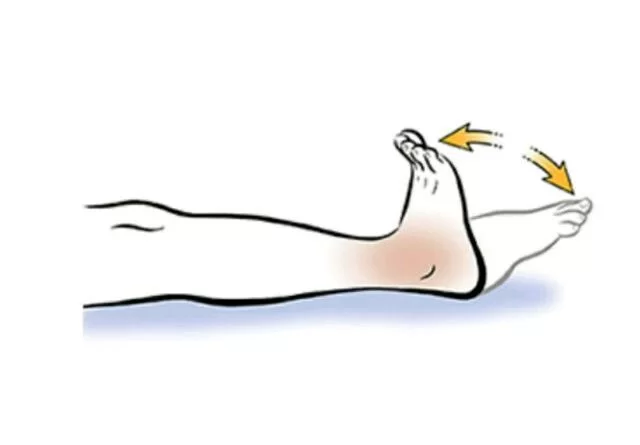
1. Ankle pump
lies down on a bed.
Flex your toes so that they’re pointing up. Hold this position for 3 seconds.
direct your toes forward, as if shoving down on a car escalate pedal. Hold this position for 3 seconds. do 12-15 reps.

2. Pelvic tilt
The pelvic tilt exercise can loosen tight back muscles and keep them flexible. To do lower back flexibility exercise
Lie down on the bed with knees bent and feet flat, keeping the arms by the sides.
Gently arch the lower back and push up the stomach. Hold for 5 seconds, then relax.
Flatten the back and pull the belly button in close to the bed.
Hold for 5 seconds, then relax.do 12-15 reps.

3. Breading
Lay down on your back on the mat.
flex your knees with your feet flat on the bed.
remain your arms straight at your sides.
Raise your hips off the bed until your knees, chest, and shoulder are in line.
Pause in the above position for 10 seconds before you lower your hips on the bed.

4. SLR: straight leg raise
Lie down on your back with your hips and your legs laid out comfortably on the floor.
Bend one knee at a 90-degree angle, planting the foot flatly on the floor.
take a breath slowly, and lift the straight leg six inches off the ground.
Hold for three seconds.
breath out slowly, lower the leg to the floor with control
Relax and repeat 10 times more.
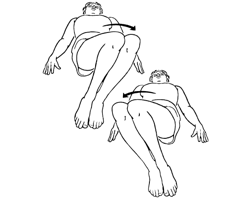
5. Trunk rotation
Start in a supine position on the bed.
Keep your knees bend and feet flat on the bed.
Maintain your shoulders and upper body forcefully against the bed.
Outstretch your arms and press them into the bed to help with balance during the movement.
Engage/tighten the abdominal muscles.
Rotate the knees slowly to one side with control, working less than your range of motion. Your feet will shift but keep on the floor.
Hold the position for 5 seconds.
Engage/tighten the abdominal muscles to move your legs to the opposing side.
Hold for another 5 seconds. 10 times on each side.
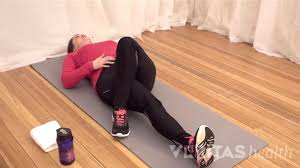
6. Piriformis stretching
Lie down with your left knee up, and both arms stretching outward at 45-degree angles away from your body.
Slowly let your left knee fall across your body to the ground.
Keep your shoulders as flat as possible. Hold for 30 seconds. Return to starting position.
Raise your right knee and let it fall across your body to the right side. Hold for 30 seconds.
Return to starting position.
Do the exercise 10 times, bilateral knees.

7. cat and Camel exercise
Start on all fours.
Create an arch in your low back by raising your abdomen upward, while at the same time bowing your head.
Hold for 30 seconds. Go back to starting position.
-Arch your back in an upward direction by lowering your abdomen toward the ground, while at the same time raising your head.
Hold for 30 seconds. Go back to starting position.
Repeat the exercise 20 times.
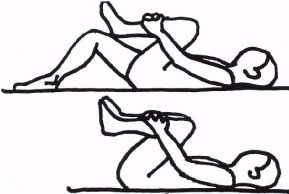
8. Knee to chest
Start with both legs and heals together flat on the ground.
Raise your right knee upward and pull it close to your chest with your hands.
Hold for 10-15 seconds, then back to starting position.
Repeat with the other legs.
Do 10 repetitions with each leg, alternating between both legs.
Phase three: five to twelve weeks
- strengthening exercise
1. Quad superman
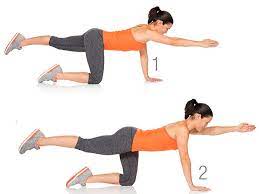
You can start this exercise by being on your knees & hand with your neck straight.
Raise your right hand & left leg at shoulder height,
balancing your body with the left hand & right knee on the bed.
Hold on at this position for 5 seconds.
Then lower your hand & leg to the original position.
Repeat the same with the opposite hand & leg.
You can do this 10- 12 times in four sets.
Muscle worked: Superman works your glutes, strengthens your lower back, and builds up your core muscle.
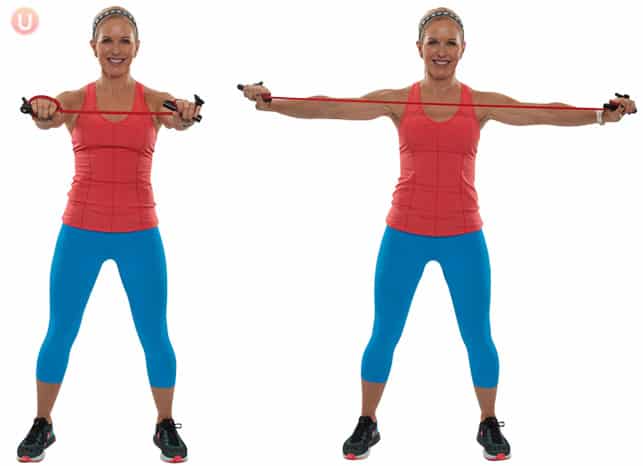
2. Resistance band pull-apart
Stand with arms extended. Hold a resistance band tight in front of you with both hands so the band is parallel to the floor.
Keeping arms straightway, drag the band to the chest by moving your arms out to the sides. Initiate the
movement from your mid-back, squeeze your shoulder blades together, and keep your backbone neutral. Slowly back to the starting position.
8 – 10repetations.
Muscles worked: The main motion of this exercise is a scapular retraction, which means you drug your shoulder blades together. This helps target upper back muscles such as the rear deltoids, rhomboids, and trapezius.
3. Back extension
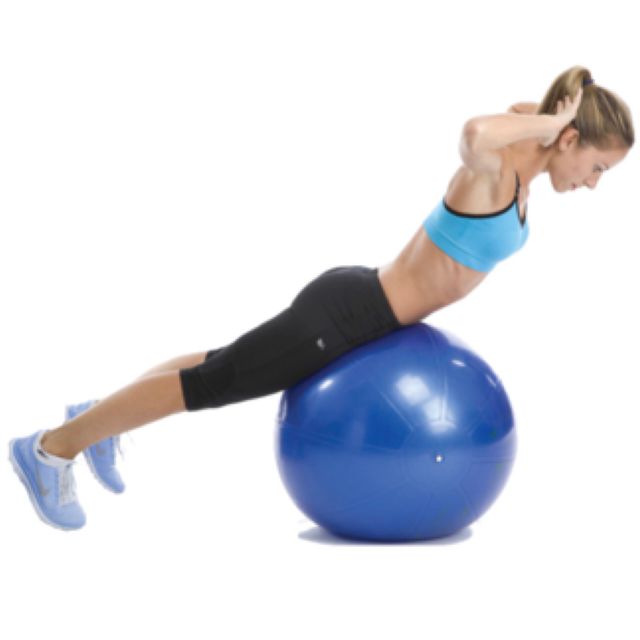
prone on an exercise ball with your abdomen in the center of the ball. hold down the balls of your feet to the floor
behind you to stay stable. You can place your feet against a wall for other support.
Extend your arms overhead, in parallel with your ears. Bend first at your waist, getting your body down toward the floor.
This is your starting position.
Slowly upraise your upper body and arms toward the sky until your shoulders are above hip height. catch up on your core and
glutes and remains your feet on the floor.
Pause for a moment at the top, then slowly back to starting position
Complete 1 – 3 sets of 8 – 12 reps.
Muscles worked: out Back extensions are great for targeting your back extensor muscles, known as the erector spinae
muscles.

4. Suspended row.
rap TRX handles and walks under them, forming a tabletop position with arms extended. The more parallel your back
is to the floor, the tough this exercise will be. You can also do this movement with straight legs, remains your body in one straight line.
remains your back straight and your elbows near to your sides, pull yourself up toward the ceiling.
Extend your arms and back to the starting position.
Complete 1 – 3 sets of 8 – 12reps.
Muscles worked: Suspended rows target the three largest muscles of your back — the trapezius, latissimus dorsi, and rhomboids. You’ll also strengthen your shoulders, core, and biceps with this move.
5. Good morning
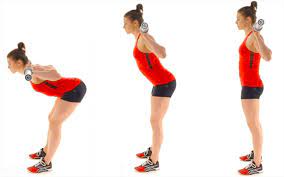
However, safely build up a barbell on your shoulders behind your head, If using weight. Position your feet shoulder-width apart.
hanging at your hips, soften your knees, and lower your torso toward the floor, stopping when it’s similar to the floor. Your back should remain straight throughout this motion.
Once you reach parallel, push through your feet and replace them to the starting position. Complete 1 – 3 sets of 8 – 12reps.
Muscles worked: Good mornings target many muscles along the back of your body, including your hamstrings, glutes, upper back muscles, and erector spinae

6. Wide dumbbell bent-over row
Hold a dumbbell in both hands with your palms facing your thighs, and stand with feet shoulder-width apart. Bent your knees slightly, remaining core engaged and neck neutral, and hinge at the hips until your torso forms a 45-degree angle with the floor. Allow the dumbbells to swing down in front of you.
Begin to row with your elbows at a 90-degree angle, and drug them up toward the ceiling. press(squeeze) your shoulder blades together at the cap.
Return to the starting position and repeat, 8–110 reps.
Muscles worked: This move targets most of the muscles in your back, such as your rhomboids, latissimus dorsi, erector spinae, and trapezius.
Preventive measures
- DO the proper warm-up before some exercises or sporting activity.
- Stretch after exercising or playing sports
- Avoid immediate intense strength training and build strength gradually
- Do Regular stretching and strengthening exercises for your sports, fitness, or work exertion, as a part of your overall physical activities
- An exercise program can help to minimize your danger of muscle strains.
- Try to be in a shape to play your sport; don’t play your sport to get in shape.
- If you have a physically demanding occupation, regular exercise can help to help injuries.
- Follow a healthy diet and an exercise program to maintain a healthy weight. The overweight can put added pressure on the muscles, making muscle strains again probable to do

